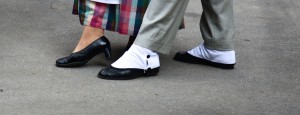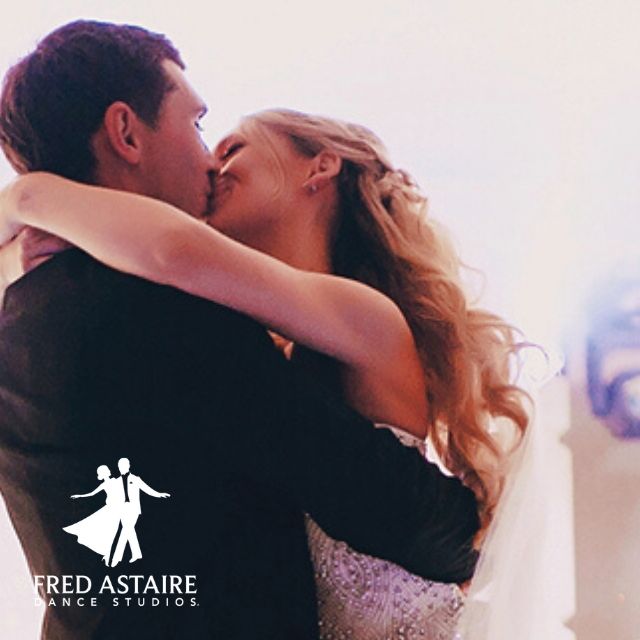
by BERKELEY WELLNESS | NOVEMBER 20, 2014
With shows like Dancing With the Stars and So You Think You Can Dance in full swing, dancing is becoming one of America’s favorite pastimes. There is even National Dance Day, which was started in 2010 to “encourage Americans to embrace dance as a fun and positive way to maintain health and fight obesity.”
Dancing provides physical, psychological, and social benefits galore, so put on your dancing shoes and follow along.
Quickstep for balance, tango for the blues? Many studies have found that dancing can improve balance, even in frail elderly people. Some have shown improvements in gait, walking speed, and reaction time, as well as cognitive and fine motor performance. Dance studies have included jazz, ballroom, tango, folk, and a series of slow, low-impact dance movements—though any kind of dancing would likely be beneficial.
Interestingly, according to a review in theEuropean Journal of Physical and Rehabilitation Medicine in 2009, dancing may help people with Parkinson’s disease, which is characterized by rigid muscles, slowed movement, and impaired balance. Dancing may also be good for your mood. It has been shown to reduce depression, anxiety, and stress and boost self-esteem, body image, coping ability, and overall sense of well-being, with the benefits lasting over time. In one study, it even helped control “emotional eating” in obese women who eat as a response to stress.
The authors of a meta-analysis of 27 studies on the effectiveness of dance movement therapy, published in Arts in Psychotherapy this year, concluded that dancing should be encouraged as part of treatment for people with depression and anxiety. Though other forms of exercise can have many of the same benefits, dancing is more appealing to some people, so they are more likely to stick with it. For example, at the end of a study that compared tango dancing to mindfulness meditation, 97 percent of participants chose to receive a voucher for a tango class rather than one for mindfulness meditation. (By the way, the study found that both activities reduced depression, but only dancing reduced stress levels.) In another study, attendance was higher with waltzing than conventional exercise, possibly because “dance is a form of exercise in which movement, social interaction, and fun are mixed together,” the researchers said.
Boost Heart Health & Burn Calories
If dancing gets your heart rate up, it can be a good form of aerobic exercise, which is good for your heart in general. One study even found that in people with stable chronic heart failure, slow-fast (interval) waltzing improved heart and blood vessel function and overall quality of life as much as a moderate aerobic exercise program did. On average, a 150-pound person burns about 240 calories per hour when dancing. But the numbers vary a lot, from less than 200 calories per hour for slow dances like tango to about 350 calories for faster dancing like swing—and more than 500 calories for step aerobics dancing. Of course, for the more active dances you probably won’t dance a full hour.
Put on Your Dancing Shoes
Because there are so many different types of dance, you should be able to find a style that suits you in terms of intensity (high-or low-impact, fast or slow), difficulty level, type of music you like, and whether you prefer to dance with or without a partner. If you want an upbeat, calorie-burning style, you can try tap or swing, for example. If you want something more reserved, there is tango. Foxtrot is a good choice for beginners; quickstep for more advanced dancers. If you like your dancing more spicy, why not try salsa or mambo? Want to dance with passion? Flamenco may be your calling. If group dancing appeals to you, there is line and folk dancing.
In addition to dance studios that give individual and group lessons, many gyms have dance-fitness classes like Zumba that combine dance and aerobics; some incorporate styles like hip hop, Bollywood, and ballet along with Pilates or other core exercises. You can also search online for a variety of dance events in your area, sponsored by different dance groups or dance schools. In many cities, for example, you can find nightly salsa social dances, tango “milongas,” and swing “meetups.”
If you prefer to dance at home, there are videos and Wii Fit dance games (such as Golds Gym Workout and Just Dance)—or you can just crank up your own music and do your own thing
A Dance App to Prevent Falls
Dance! Don’t Fall is a dancing-balance app for Android phones developed by Portuguese researchers to help older people improve their balance through an easy dance exercise. Many hospitals, rehab facilities, and community centers offer dance therapy, such as Healthy-Steps (gohealthysteps.com), which incorporates the Lebed Method, a movement program originally developed for cancer patients. Another program, Dance for PD (danceforparkinsons.org), offers classes for people with Parkinson’s disease that integrate movements from traditional and modern dance; they are taught by trained dancers and accompanied by live music.
Bottom line: There’s no downside to incorporating dance into your regular physical activity routine, and it could help motivate you to get moving if you find other types of workouts, like treadmill walking or cycling, a little boring. People with medical conditions such as heart disease, Parkinson’s, arthritis, and vision impairment may benefit—after they get their doctor’s okay in some cases.
Don’t overlook the social benefits: Dancing is a great way to spend quality time with a partner or meet new people if you don’t have a partner.


